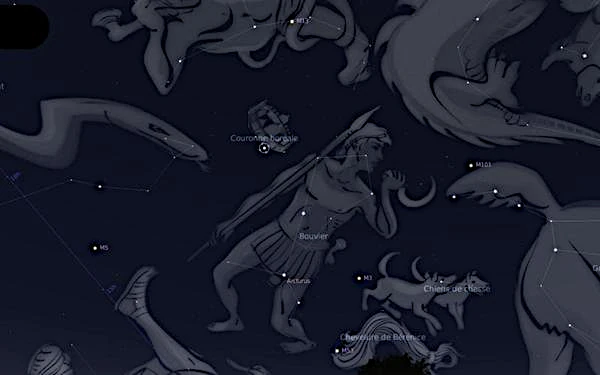
Image: Constellation Corona Borealis. Image reworked from Open Source Stellarium software.
Have you ever heard of the constellation Corona Borealis? It is a small constellation located in the northern hemisphere, easily observable in summer, which has a shape resembling a crown.
Corona Borealis is made up of several bright stars that connect to form an arc. It takes its name from the crown worn by kings and queens.
But did you know that this constellation is also important for astronomers? The Corona Borealis contains several fascinating objects to observe, such as star clusters and galaxies.
For example, the constellation is home to the globular cluster M3, which is one of the oldest clusters in the Milky Way. This cluster is made up of several hundred thousand stars gravitationally bound together. Observing it with a telescope, one can see many bright and colorful stars.
Corona Borealis is also home to several interesting galaxies, such as NGC 6085, which is a barred spiral galaxy. This galaxy has a bright core and a clear spiral shape, which can be observed with a telescope.
In addition to its fascinating objects, the Corona Borealis is also important for navigation. The constellation is located near the celestial equator, which means it is visible from almost all parts of the Earth. This makes it a useful landmark for sailors and explorers, who have used the stars to navigate across oceans for centuries.
In sum, the constellation of Corona Borealis is a beautiful little constellation that deserves to be discovered and explored. Whether you're interested in mythology or science, there's a lot to learn from gazing at this celestial crown in the night sky.